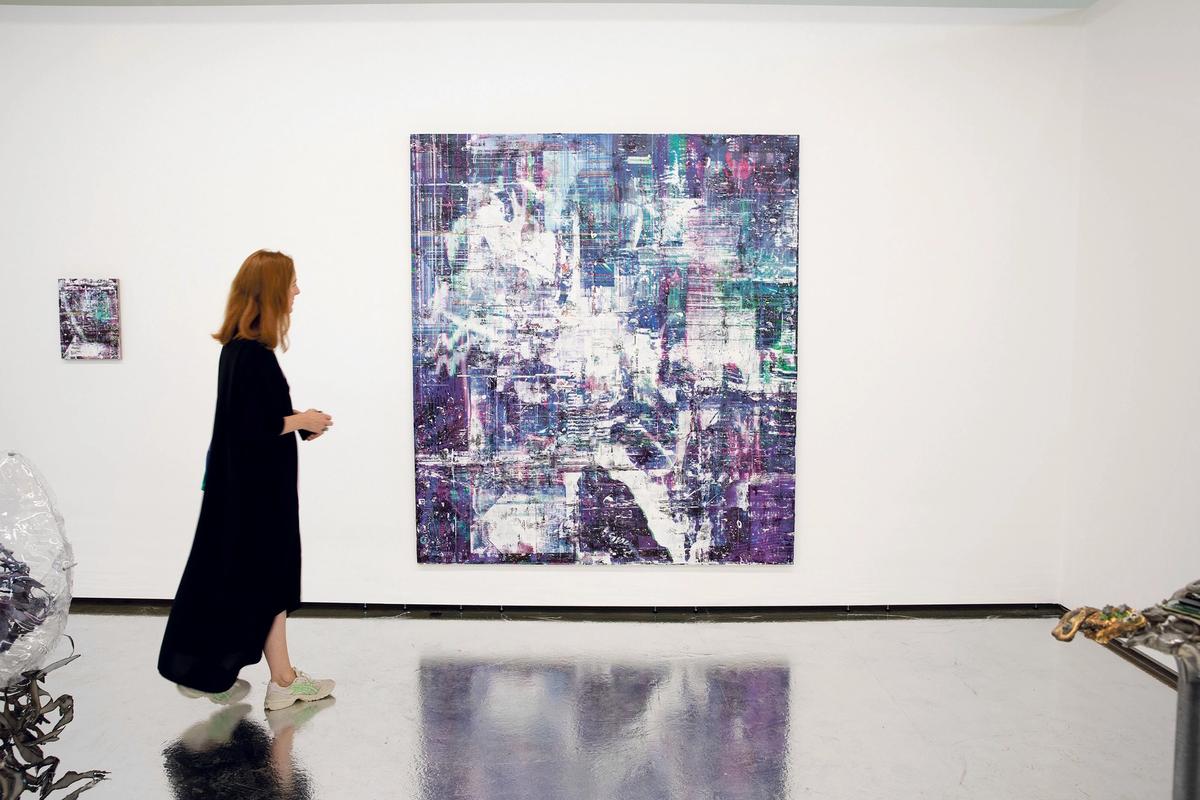Basel’s Liste Art Fair has long branded itself on youth. Since it was established in 1996, it has been touted as the younger—and cooler—alternative to Art Basel, where collectors can discover emerging galleries and artists. To this end, Liste initially banned galleries from showing artists over the age of 40. The rule was relaxed in 2013, enabling galleries to bring work by over-40s artists if they paid the highest fees: SFr15,000 ($16,500) for solo stands and SFr16,000 ($17,500) for group presentations. But as conversations around ageing in the art world mature and the market for barely graduated artists booms, it seems that Liste’s age restriction might be getting old.
“Artists can emerge at any point of their life. I’d love to see Liste’s rule changed,” says Damîen Bertelle-Rogier, the founder of the Brussels gallery Super Dakota. It is among half-a-dozen exhibitors that are showing work by over-40s artists this year, having brought two paintings by Chris Dorland. The larger piece, priced at $28,000, sold to a private European collector on Monday 11 June, the fair’s opening day.
“It’s usually easier to stick to old categories than change ways of thinking”Olga Temnikova, the director of Temnikova & Kasela in Tallinn
Most Liste exhibitors approached by The Art Newspaper were in favour of rethinking the fair’s age rule. Olga Temnikova, the director of Temnikova & Kasela in Tallinn, emphasises that a hyperfocus on age inevitably discriminates against women. Her gallery has brought paintings by the Latvian artist Inga Meldere. “Being a woman in Eastern Europe, and then having a kid, not to mention the years lost to Covid” can delay a career, Temnikova points out. Liste’s rule is “ageist”, she says, “but it’s usually easier to stick to old categories than change ways of thinking”.
It is not just women artists who are disproportionately affected by age discrimination, but also those from the Global South. Such is the case of Miguel Cárdenas, a Colombian artist based between Bogotá and New York, whose bronze animal head sculptures and oil paintings are presented by Kendall Koppe gallery in Glasgow, and are priced between $4,000 and $17,000. “Cárdenas has an extensive CV but, like many artists not from the West, has taken longer to gain recognition from galleries in New York, London and so forth,” Koppe says. He, too, expresses support for scrapping Liste’s age restrictions.
A change would also make sense given the current market frenzy around artists in their 30s and even 20s, who are increasingly commanding astounding sums at auction and seeing their primary prices balloon accordingly. Youth is not the barrier to commercial success it once was. At Sotheby’s The Now sale last month in New York, the 30-year-old Jadé Fadojutimi’s large abstract painting A Toast to..? (2020) made $952,000 (with fees)—a figure that barely scratches her auction record of $1.6m (with fees) made at Phillips in London in 2021, when she was 28.
While a slight cooling of this “ultra-contemporary” market is now being observed, “prices for virtually all young artists have gone up”, says Sibylle Rochat, a Swiss art adviser and collector. “Even for artists without grand CVs or big gallery backing, a small painting can easily be $30,000, which was not the case before. Their share of the total market is bigger.”
A course correction could soon be coming at Liste. Joanna Kamm, the fair’s director, tells The Art Newspaper thatshe has been considering a rethink of the age restriction since her appointment in 2018. “We need to figure out how we can do this while remaining the fair of discovery,” she says. Liste operates as a non-profit, so if the higher stand fees are scrapped for presentations of artists over 40, the funds must be found elsewhere.
A solution was floated to the fair’s organising committee last year to raise the exhibitor fees for group presentations in order to lower the costs of showing older artists, but this was voted down, Kamm says. One dealer at Liste this year, who prefers to remain anonymous, says he would still rather pay a premium for older artists than for group shows, underlining how achieving age parity might be easier said than done.


